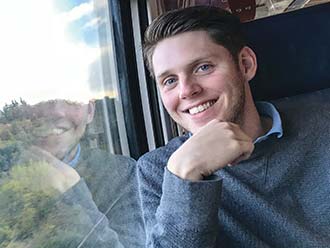Although women now make up just under half of America’s total labor force and receive a larger share of degrees than men do, they continue to earn less money than their male counterparts and are less frequently employed in leadership positions. The gender gap, unfortunately, is no different at universities.
Recognizing these disparities, UTA is working hard to support gender diversity across campus and the greater community, from the University’s efforts to hire more female faculty members to its robust support of programs aimed at current students, staff, and the Metroplex’s young girls. In this issue of UTA Magazine, we take a look at just a few of these initiatives.
HIRE EDUCATION
While it’s worth noting that female deans run half of the University’s colleges—the College of Nursing and Health Innovation, the College of Education, the College of Liberal Arts, and the College of Architecture, Planning, and Public Affairs—women are traditionally underrepresented in science and technology fields, both on campus and in the world at large. A 2017 study in Educational Researcher found that, in analyzing the data from 40 public universities, women made up only 31 percent of the biology faculty and 18 percent of the chemistry faculty, while they represented 53 percent of the education professors and 49 percent of the English professors at those same institutions.
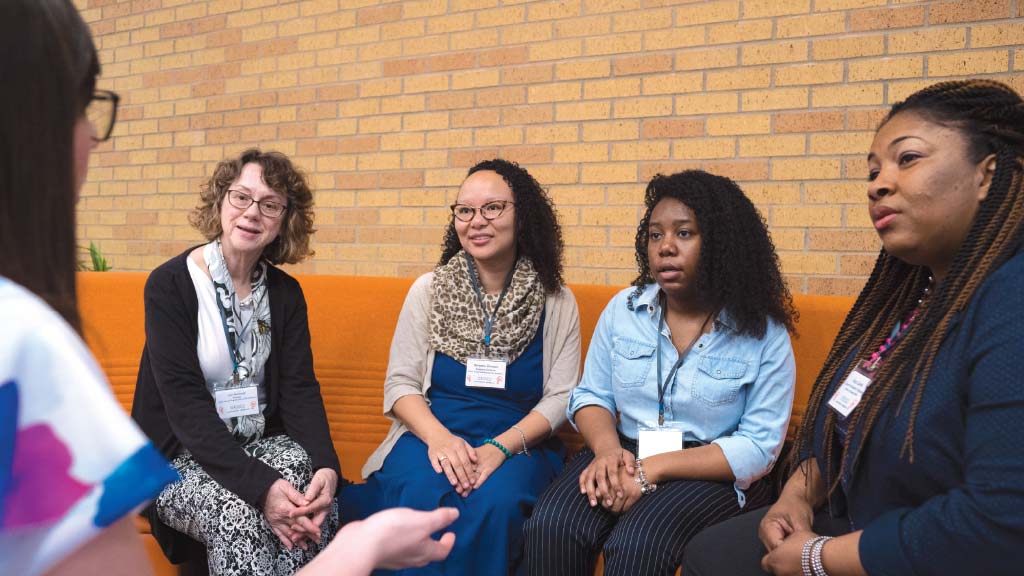
ACADEMIC LEADERS: Elisabeth Cawthon - COLA, Teresa Taber Doughty - Education, Elizabeth Morwin - CONHI, Adrian Parr - CAPPA
Computer science sees even less gender parity, with studies suggesting women account for roughly 15 percent of faculty nationwide. Recognizing the imbalance, UTA’s Department of Computer Science and Engineering has made diversity a top priority in its recent searches for new faculty members. Of the department’s five new hires for the 2018–19 academic year, two—assistant professors Ming Li and Shirin Nilizadeh—are women.
“Two out of five—that’s less than half, but it’s much higher than our current department ratio. It’s also higher than the percentage of female PhD students in computer science,” says Chengkai Li, associate chair of the department. “Being able to recruit two female professors was quite a success because we haven’t been able to do that for years.”
In 2018, the department also participated as a sponsor of the Grace Hopper Celebration, described as the world’s largest gathering of female technologists, and Dr. Li says they plan to continue that level of involvement in future years. UTA’s exhibition booth last September gave the department an opportunity to publicize its offerings— which Li hopes could help attract PhD and faculty applicants—while some of the doctoral students who attended fielded job and internship offers from companies like Facebook and Google.
FACULTY SUPPORT
Within the last few years, two networks have begun on campus to support the University’s female faculty and staff.
The Women’s Faculty and Staff Network (WFSN) was created in 2017 to bring together women across campus who might not ordinarily meet and provide them with a forum in which they can share their experiences, ideas, and concerns.

At the first WFSN Conference, women had the opportunity to learn and network, making valuable connections across the University.
“Due to the nature of how any university is structured, it’s easy for faculty and staff to stick to their own areas,” says Martha Walvoord, associate professor of violin and WFSN faculty co-chair. “But providing more organic opportunities for women to come together allows more room for collaboration and opens up interdisciplinary connections.”
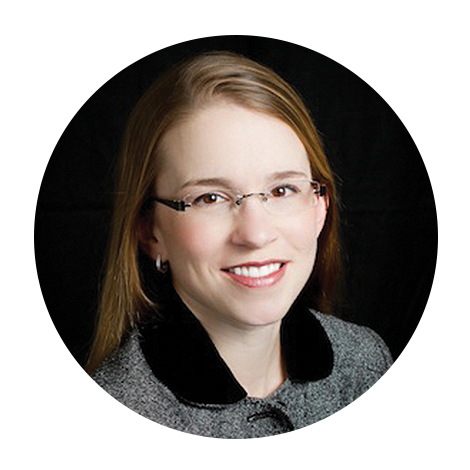 “Providing more organic opportunities for women to come together allows more room for collaboration and opens up interdisciplinary connections.”
“Providing more organic opportunities for women to come together allows more room for collaboration and opens up interdisciplinary connections.”
-Martha Walvoord
Although the group is still working to determine how it can best support the campus community, some of its goals are to create networking opportunities and support professional development for its members, and to serve as a policymaking voice at UTA. They have already started bringing women together through a book club and monthly lunch meetings, with recent speakers addressing topics such as leadership and Title IX reporting.
Minerva Cordero, mathematics professor and associate dean in the College of Science, started Women in Science as a support and ideas-sharing network for female faculty in the College of Science and the College of Engineering.
“Because women are underrepresented in science, it becomes more of a need to have that support and those discussions about what we can do to change that,” says Laura Mydlarz, professor and associate chair in the Department of Biology. Dr. Mydlarz is currently running the group while Dr. Cordero serves in a one-year position at the National Science Foundation in Washington, D.C.
In addition to increasing the visibility of the University’s female scientists and engineers, one of the group’s goals, according to Dr. Mydlarz, is to expose their students to amazing female researchers. In spring 2017, the group launched, with the support of the College of Science, the Distinguished Women in Science Speaker Series, which has thus far brought two of ExxonMobil’s female professionals to campus.
In addition to meeting semi-regularly during the year and providing mentorship to their younger colleagues, the Women in Science group gathers both at the start of the year to welcome new faculty members and at the end of the year to recognize promotions. “It’s important to get together to show support and celebrate each other’s accomplishments,” Mydlarz says.
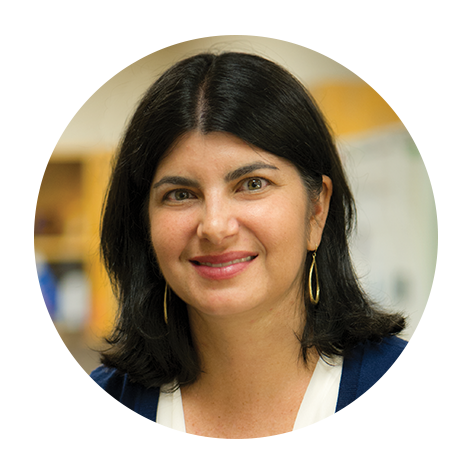 “It’s important to get together to show support and celebrate each other’s accomplishments,”
“It’s important to get together to show support and celebrate each other’s accomplishments,”
Laura Mydlarz
STUDENTS IN STEM
While UTA’s female population reached a record high last year—with three female students for every two male students—the gender ratio between the schools and colleges varies significantly. Women make up more than 80 percent of the students in the School of Social Work, College of Education, and College of Nursing and Health Innovation, while men make up roughly 80 percent of the College of Engineering students.
A student group such as the Association for Women in Mathematics (AWM) can provide a much-needed sense of belonging. The UTA chapter—which won an award from the national organization in 2017 for its fundraising prowess—counts about 70 students, both male and female, as members. Biweekly meetings feature free pizza and a speaker, and the AWM has consistently engaged in outreach activities, such as hosting Sonia Kovalesky Days that encourage local middle and high school girls to pursue math.
“But the most important thing is that they’re forming some sort of mathematical community,” says Theresa Jorgensen, associate professor in the Department of Mathematics and AWM faculty adviser. “That’s what all our student groups are about, that opportunity for them to create relationships with other students and faculty members who are outside of the classroom structure. When they face challenges, they’ll have friendly faces to talk to.”
Mirage Hamdy, who graduated in December with a degree in industrial engineering, says that being a member of UTA’s Society of Women Engineers chapter changed her perspective on being a woman in that field. Growing up in Houston, the only engineers she knew were her friends’ fathers who worked in oil and gas, and she wasn’t aware of STEM opportunities in high school. She experienced imposter syndrome, feeling like she wasn’t good enough to do engineering, but her feelings shifted last year after listening to a professional female engineer speak at a panel. “She was telling us that it was OK to demand for more and to demand for different,” Hamdy says.
Her involvement in the Society of Women Engineers also led to an internship and, eventually, a job after an AT&T recruiter attended one of its meetings. Hamdy started her full-time job there as a technical business manager in January. “I think that’s an opportunity I wouldn’t have had before,” she says.
COMMUNITY ENDEAVORS
Even though, statistically speaking, high schools girls do just as well in math and science classes as their male counterparts, research indicates that their interest in the subjects starts waning in middle school.
A 2018 Microsoft/KRC Research study examining the STEM gender gap found, as one contributing factor, that an overwhelming amount of middle school girls desire careers that are creative and impactful, but less than half see math, science, or engineering as either of these things. However, after the researchers shared some real-world accomplishments with the girls, their positive perceptions of these fields significantly increased.
“They’ve been to the doctor and the dentist; they know the fireman and LeBron James. Those careers are commonplace,” says Rosie Kallie, an industrial engineer and director of TexPREP and engineering and computer science summer camps in the College of Engineering. “But they’re not aware that engineers are right there with them, all day, from the time they get up in the morning and turn on the water, check their phone, or get in the car.”
The College of Engineering’s Girlgineering summer camp aims to change that. During the one-week program, local middle school girls in grades 5–9 explore their interest in engineering through field trips, guest lectures, and hands-on activities, such as building a tower out of newspaper without using fasteners like glue or paperclips. “We want them to realize that engineering is a broad field with many different types of opportunities,” Dr. Kallie says. “And it can be a lot of fun.”
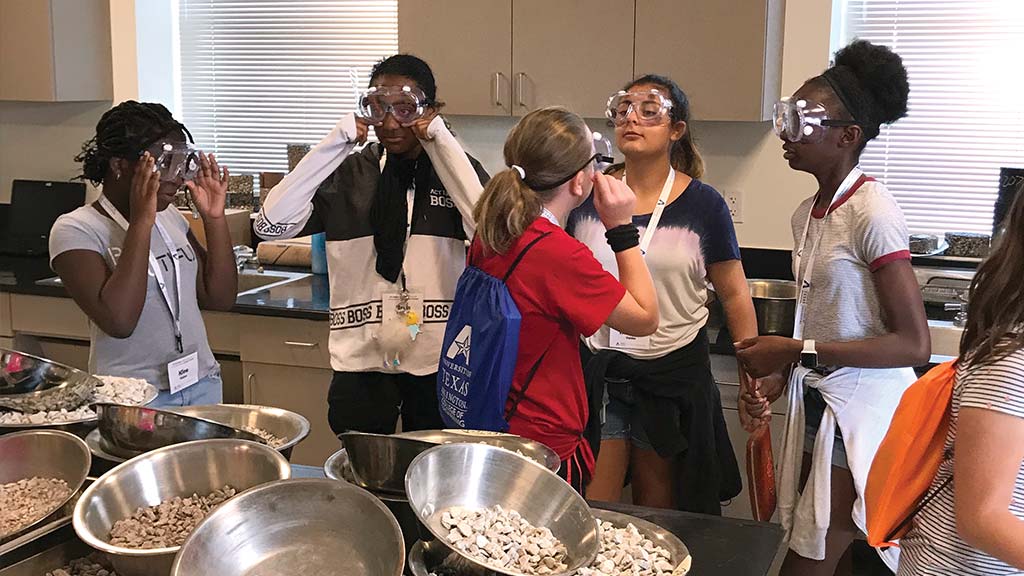
Young women from local schools participate in hands-on science through UTA’s Girlgineering camp.
Last summer, the Department of Bioengineering welcomed a group of local female high school students participating in a Design Connect Create physics camp field trip. Kytai Nguyen, professor of bioengineering, and some of her doctoral students showed the girls around campus, allowed them to experiment with biomedical sensors such as electrocardiograms, and taught them how to make ice cream out of liquid nitrogen.
Kallie points out that these summer activities don’t just benefit area kids, but also the UTA students who help these programs succeed. “In addition to mentoring younger kids, they learn presentation skills, which will help them in industry when they have to explain their concepts to a lay audience,” she says. “You may have the best idea, but if you can’t explain it, you won’t get the partnerships or funding that you seek.”
Despite national efforts to address disparities, the gender gap still exists, but at UTA, changes are well underway.
“We will continue to strive to improve our diversity, not just on the surface but in actual substance,” says Hong Jiang, Wendell H. Nedderman Endowed Professor and chair of the Computer Science and Engineering Department. “Although this may take time, we have created a heightened awareness throughout our department, and we’re taking action.”
That sentiment is evident across campus as UTA continues to demonstrate its commitment to support its female faculty, staff, students, and neighbors.
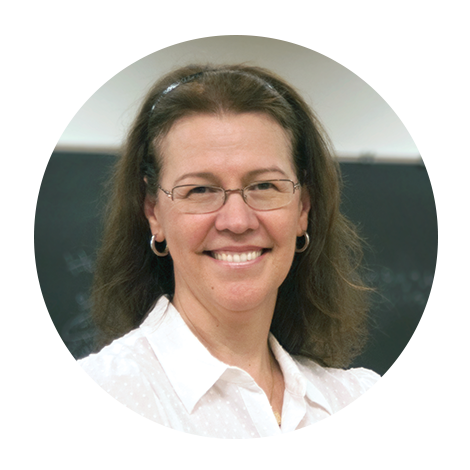
NATIONAL LEADER
Mathematics Professor Minverva Cordero’s efforts to champion women in STEM at UTA have earned her a national appointment. Dr. Cordero has accepted a one-year position in the National Science Foundation’s Division of Education and Human Resource Development as Program Director of the ADVANCE and Hispanic-Serving Institutions, or HSI programs. In her role, she will work to increase the participation and advancement of women in academic STEM careers and to increase the opportunities for HSIs.
